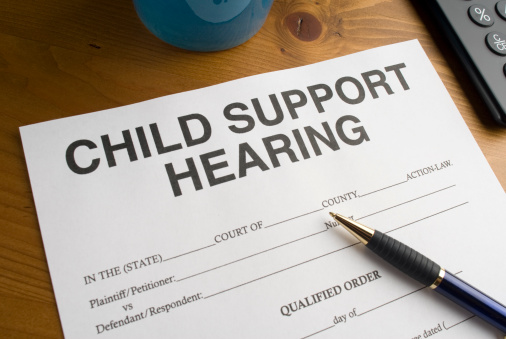
Not all divorces are related to alcohol abuse, but the percentage is fairly high. I don’t have any scientific study, but my own experience of observing thousands of divorces over three decades, I have found that nearly half of all divorces involve, at minimum, allegations of some type of alcohol abuse. From observing the interactions in these cases, as well as working with professionals in these areas, here are the most important observations I have made:
If you think there is a problem, you are probably right.
If one party truly believes there is alcohol abuse in the marriage, there is a very high probability that they are right. Yes, it is true that divorce can lead to many false allegations, particularly if you are in an adversarial divorce. However, while divorcing couples often exaggerate most flaws of the other spouse, I have found that, largely because of co-dependency dynamics, many spouses actually under report alcohol abuse.
If your spouse thinks you have a problem, you certainly have a problem.
How can I be certain? Easy. First, as indicated above, if your spouse truly thinks you have a problem, there is a high probably they are right. Moreover, even if they are wrong, their belief that you have a problem is, by itself, a major problem. In either case, the solution often points to undergoing a thorough and honest alcohol assessment. If you can get at the truth, everyone wins.
A spouse stopping or cutting back alcohol use during the divorce proves little. Often the spouse believed to have an alcohol problem will either stop using alcohol or cut back on alcohol use as the threat of divorce draws near. While this may (or may not) be a welcome reprieve for the family, it generally means very little in terms of determining the existence of a problem. Indeed, most chemical dependency counselors see frequent failed attempts to stop or cut back as being one of the indicators of alcoholism. Moreover, for most alcoholics, stopping drinking does not necessarily end the alcoholic behavior.
Sometimes alcohol use during divorce can be “situational”.
Divorce usually does not come up suddenly, but rather creeps into homes over months or years. As it creeps closer, the sadness or fear can sometimes cause non-alcoholics to temporarily abuse alcohol during this difficult time. While temporary abuse of alcohol still has serious consequences the long-term impact can be quite different than addressing alcoholism.
If alcohol is an issue, you need a process in which honesty can be rewarded. Divorce processes differ. Traditional divorces that operate in the shadow of the courthouse can sometimes seem to punish honesty in the sense that the person suspected of alcohol abuse feels compelled to either deny or minimize the allegations for fear of losing time with their children. On the other hand, processes such as Collaborative Law or mediation, by operating outside of court, can provide a safe place where alcohol use can be addressed as a health issue and not as a piece of evidence. To learn more about these options go to
www.Collaborativelaw.org or www.divorcechoice.com.
 The kids might not be the only ones headed back to school this fall. Divorce forces many parents back into the workforce, and for some, even back to school. Divorce can initiate some dramatic changes in your lifestyle, and it make you re-evaluate yourself and your career. Some former stay at home parents are now looking for an enriching way to increase earning potential by going back for a degree they never finished, for a new degree, or for some it may be their first time in college. Divorce forces many people to take a risk, to do something for their selves, to strive for personal growth and to set goals, which is why many decide going back to school is a good option for them.
When evaluating if going back to school is the right option for you consider that your goals are: Are you hoping to begin a new career? Advance in your current career? How long will it take? What will you be able to earn when you are finished? Consider the cost: Ask your attorney about whether continuing your education post-divorce will affect your spousal maintenance. Check with your employer to see if they cover any of the cost. Discuss your financial situation at the college’s Financial Aid office to see if you may qualify for any grants or scholarships, and of course, compare tuition amounts for schools in your area.
Typically called, “non-traditional students” divorcees, over 35, and typically women, make up a good percentage for the student population at community, private, and online colleges, which usually offer flexible schedules and work at your own pace credit loads to graduate. It is not easy taking a risk and making a big commitment to go back to school, but if you decide that going back to school post-divorce is for you, rest assured that you are not alone.
The kids might not be the only ones headed back to school this fall. Divorce forces many parents back into the workforce, and for some, even back to school. Divorce can initiate some dramatic changes in your lifestyle, and it make you re-evaluate yourself and your career. Some former stay at home parents are now looking for an enriching way to increase earning potential by going back for a degree they never finished, for a new degree, or for some it may be their first time in college. Divorce forces many people to take a risk, to do something for their selves, to strive for personal growth and to set goals, which is why many decide going back to school is a good option for them.
When evaluating if going back to school is the right option for you consider that your goals are: Are you hoping to begin a new career? Advance in your current career? How long will it take? What will you be able to earn when you are finished? Consider the cost: Ask your attorney about whether continuing your education post-divorce will affect your spousal maintenance. Check with your employer to see if they cover any of the cost. Discuss your financial situation at the college’s Financial Aid office to see if you may qualify for any grants or scholarships, and of course, compare tuition amounts for schools in your area.
Typically called, “non-traditional students” divorcees, over 35, and typically women, make up a good percentage for the student population at community, private, and online colleges, which usually offer flexible schedules and work at your own pace credit loads to graduate. It is not easy taking a risk and making a big commitment to go back to school, but if you decide that going back to school post-divorce is for you, rest assured that you are not alone.  The kids might not be the only ones headed back to school this fall. Divorce forces many parents back into the workforce, and for some, even back to school. Divorce can initiate some dramatic changes in your lifestyle, and it make you re-evaluate yourself and your career. Some former stay at home parents are now looking for an enriching way to increase earning potential by going back for a degree they never finished, for a new degree, or for some it may be their first time in college. Divorce forces many people to take a risk, to do something for their selves, to strive for personal growth and to set goals, which is why many decide going back to school is a good option for them.
When evaluating if going back to school is the right option for you consider that your goals are: Are you hoping to begin a new career? Advance in your current career? How long will it take? What will you be able to earn when you are finished? Consider the cost: Ask your attorney about whether continuing your education post-divorce will affect your spousal maintenance. Check with your employer to see if they cover any of the cost. Discuss your financial situation at the college’s Financial Aid office to see if you may qualify for any grants or scholarships, and of course, compare tuition amounts for schools in your area.
Typically called, “non-traditional students” divorcees, over 35, and typically women, make up a good percentage for the student population at community, private, and online colleges, which usually offer flexible schedules and work at your own pace credit loads to graduate. It is not easy taking a risk and making a big commitment to go back to school, but if you decide that going back to school post-divorce is for you, rest assured that you are not alone.
The kids might not be the only ones headed back to school this fall. Divorce forces many parents back into the workforce, and for some, even back to school. Divorce can initiate some dramatic changes in your lifestyle, and it make you re-evaluate yourself and your career. Some former stay at home parents are now looking for an enriching way to increase earning potential by going back for a degree they never finished, for a new degree, or for some it may be their first time in college. Divorce forces many people to take a risk, to do something for their selves, to strive for personal growth and to set goals, which is why many decide going back to school is a good option for them.
When evaluating if going back to school is the right option for you consider that your goals are: Are you hoping to begin a new career? Advance in your current career? How long will it take? What will you be able to earn when you are finished? Consider the cost: Ask your attorney about whether continuing your education post-divorce will affect your spousal maintenance. Check with your employer to see if they cover any of the cost. Discuss your financial situation at the college’s Financial Aid office to see if you may qualify for any grants or scholarships, and of course, compare tuition amounts for schools in your area.
Typically called, “non-traditional students” divorcees, over 35, and typically women, make up a good percentage for the student population at community, private, and online colleges, which usually offer flexible schedules and work at your own pace credit loads to graduate. It is not easy taking a risk and making a big commitment to go back to school, but if you decide that going back to school post-divorce is for you, rest assured that you are not alone. 







 Not all divorces are related to alcohol abuse, but the percentage is fairly high. I don’t have any scientific study, but my own experience of observing thousands of divorces over three decades, I have found that nearly half of all divorces involve, at minimum, allegations of some type of alcohol abuse. From observing the interactions in these cases, as well as working with professionals in these areas, here are the most important observations I have made:
If you think there is a problem, you are probably right.
If one party truly believes there is alcohol abuse in the marriage, there is a very high probability that they are right. Yes, it is true that divorce can lead to many false allegations, particularly if you are in an adversarial divorce. However, while divorcing couples often exaggerate most flaws of the other spouse, I have found that, largely because of co-dependency dynamics, many spouses actually under report alcohol abuse.
If your spouse thinks you have a problem, you certainly have a problem.
How can I be certain? Easy. First, as indicated above, if your spouse truly thinks you have a problem, there is a high probably they are right. Moreover, even if they are wrong, their belief that you have a problem is, by itself, a major problem. In either case, the solution often points to undergoing a thorough and honest alcohol assessment. If you can get at the truth, everyone wins.
A spouse stopping or cutting back alcohol use during the divorce proves little. Often the spouse believed to have an alcohol problem will either stop using alcohol or cut back on alcohol use as the threat of divorce draws near. While this may (or may not) be a welcome reprieve for the family, it generally means very little in terms of determining the existence of a problem. Indeed, most chemical dependency counselors see frequent failed attempts to stop or cut back as being one of the indicators of alcoholism. Moreover, for most alcoholics, stopping drinking does not necessarily end the alcoholic behavior.
Sometimes alcohol use during divorce can be “situational”.
Divorce usually does not come up suddenly, but rather creeps into homes over months or years. As it creeps closer, the sadness or fear can sometimes cause non-alcoholics to temporarily abuse alcohol during this difficult time. While temporary abuse of alcohol still has serious consequences the long-term impact can be quite different than addressing alcoholism.
If alcohol is an issue, you need a process in which honesty can be rewarded. Divorce processes differ. Traditional divorces that operate in the shadow of the courthouse can sometimes seem to punish honesty in the sense that the person suspected of alcohol abuse feels compelled to either deny or minimize the allegations for fear of losing time with their children. On the other hand, processes such as Collaborative Law or mediation, by operating outside of court, can provide a safe place where alcohol use can be addressed as a health issue and not as a piece of evidence. To learn more about these options go to
Not all divorces are related to alcohol abuse, but the percentage is fairly high. I don’t have any scientific study, but my own experience of observing thousands of divorces over three decades, I have found that nearly half of all divorces involve, at minimum, allegations of some type of alcohol abuse. From observing the interactions in these cases, as well as working with professionals in these areas, here are the most important observations I have made:
If you think there is a problem, you are probably right.
If one party truly believes there is alcohol abuse in the marriage, there is a very high probability that they are right. Yes, it is true that divorce can lead to many false allegations, particularly if you are in an adversarial divorce. However, while divorcing couples often exaggerate most flaws of the other spouse, I have found that, largely because of co-dependency dynamics, many spouses actually under report alcohol abuse.
If your spouse thinks you have a problem, you certainly have a problem.
How can I be certain? Easy. First, as indicated above, if your spouse truly thinks you have a problem, there is a high probably they are right. Moreover, even if they are wrong, their belief that you have a problem is, by itself, a major problem. In either case, the solution often points to undergoing a thorough and honest alcohol assessment. If you can get at the truth, everyone wins.
A spouse stopping or cutting back alcohol use during the divorce proves little. Often the spouse believed to have an alcohol problem will either stop using alcohol or cut back on alcohol use as the threat of divorce draws near. While this may (or may not) be a welcome reprieve for the family, it generally means very little in terms of determining the existence of a problem. Indeed, most chemical dependency counselors see frequent failed attempts to stop or cut back as being one of the indicators of alcoholism. Moreover, for most alcoholics, stopping drinking does not necessarily end the alcoholic behavior.
Sometimes alcohol use during divorce can be “situational”.
Divorce usually does not come up suddenly, but rather creeps into homes over months or years. As it creeps closer, the sadness or fear can sometimes cause non-alcoholics to temporarily abuse alcohol during this difficult time. While temporary abuse of alcohol still has serious consequences the long-term impact can be quite different than addressing alcoholism.
If alcohol is an issue, you need a process in which honesty can be rewarded. Divorce processes differ. Traditional divorces that operate in the shadow of the courthouse can sometimes seem to punish honesty in the sense that the person suspected of alcohol abuse feels compelled to either deny or minimize the allegations for fear of losing time with their children. On the other hand, processes such as Collaborative Law or mediation, by operating outside of court, can provide a safe place where alcohol use can be addressed as a health issue and not as a piece of evidence. To learn more about these options go to  When you are ready to start a divorce, nothing creates more frustration than the reluctant spouse. How are you supposed to move forward with your life when your husband or wife doesn’t want a divorce? Here is my advice for dealing with the spouse who is dragging their feet.
1. Keep your long-term goals in the forefront, rather than taking short-term aggressive action.
A friend of mine from another state called me recently to tell me about her meeting with a divorce lawyer. My friend wants a divorce; her husband doesn’t. The lawyer said she ought to serve and file divorce papers on her husband and tell her three children about the divorce by herself so she controlled the story to the kids.
This kind of advice is what gives lawyers a bad name. Like most people with kids, my friend wants to protect them from conflict and have a good co-parenting relationship after the divorce. That means she has to work with her husband, not set up a firestorm of conflict by launching an aggressive attack.
2. Get the right support to help your spouse.
A spouse who is not emotionally ready to handle a divorce can make the process difficult. It’s much more effective to connect with resources to help your spouse accept the divorce. If you have been in marriage counseling, you could enlist the counselor to facilitate conversations about your desire for a divorce and options for proceeding. Discernment counseling, which is a limited scope form of therapy, is another approach. Or you could work with a collaborative divorce coach, who is skilled at working with couples who are have a gap in their respective readiness to proceed with divorce.
3. Use the time to gather necessary financial documents.
While you are letting your spouse play “catch up” emotionally, it helps to feel like you are taking steps to move forward. One task that has to happen is gathering financial information. You can contact a collaborative financial neutral to find out about their services and the information that will be needed. You can gather records, such as tax returns, mortgage documents, bank statements, and credit card statements. You can look into insurance costs as an individual and look into housing options. Gathering all the financial information usually takes some time, and there is no reason why you can’t get a start on that important step. It will make things go more quickly once you are ready to start the process.
It is rare for both spouses to be in the same place emotionally when deciding to end a marriage. If you can give your spouse some time and support to accept that the marriage is over, you gain a less frustrating divorce process and a foundation for a good working relationship as co-parents.
When you are ready to start a divorce, nothing creates more frustration than the reluctant spouse. How are you supposed to move forward with your life when your husband or wife doesn’t want a divorce? Here is my advice for dealing with the spouse who is dragging their feet.
1. Keep your long-term goals in the forefront, rather than taking short-term aggressive action.
A friend of mine from another state called me recently to tell me about her meeting with a divorce lawyer. My friend wants a divorce; her husband doesn’t. The lawyer said she ought to serve and file divorce papers on her husband and tell her three children about the divorce by herself so she controlled the story to the kids.
This kind of advice is what gives lawyers a bad name. Like most people with kids, my friend wants to protect them from conflict and have a good co-parenting relationship after the divorce. That means she has to work with her husband, not set up a firestorm of conflict by launching an aggressive attack.
2. Get the right support to help your spouse.
A spouse who is not emotionally ready to handle a divorce can make the process difficult. It’s much more effective to connect with resources to help your spouse accept the divorce. If you have been in marriage counseling, you could enlist the counselor to facilitate conversations about your desire for a divorce and options for proceeding. Discernment counseling, which is a limited scope form of therapy, is another approach. Or you could work with a collaborative divorce coach, who is skilled at working with couples who are have a gap in their respective readiness to proceed with divorce.
3. Use the time to gather necessary financial documents.
While you are letting your spouse play “catch up” emotionally, it helps to feel like you are taking steps to move forward. One task that has to happen is gathering financial information. You can contact a collaborative financial neutral to find out about their services and the information that will be needed. You can gather records, such as tax returns, mortgage documents, bank statements, and credit card statements. You can look into insurance costs as an individual and look into housing options. Gathering all the financial information usually takes some time, and there is no reason why you can’t get a start on that important step. It will make things go more quickly once you are ready to start the process.
It is rare for both spouses to be in the same place emotionally when deciding to end a marriage. If you can give your spouse some time and support to accept that the marriage is over, you gain a less frustrating divorce process and a foundation for a good working relationship as co-parents. 